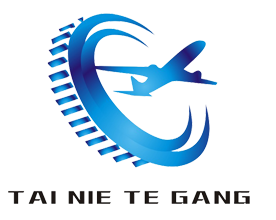
29
2022
-
09
High performance superalloys help transform clean thermal power generation in China
Nowadays, clean coal combustion technology is widely developed in the world to pursue high efficiency and low emissions of coal-fired units. Supercritical and ultra supercritical units, large CFB (circulating fluidized bed boiler), PFBC (pressurized fluidized bed gas steam combined cycle), IGCC (integrated gasification gas steam combined cycle), GTCC (gas steam combined cycle) and other new thermal power generation technologies have been widely used in developed countries due to their high efficiency and superior environmental performance. China has also carried out a lot of work. The research, development and application of clean coal combustion technology has become a hot technology for thermal power generation units in China at present. The application of all these new technologies requires high temperature alloy materials with excellent performance to provide guarantee.
Superalloys for Supercritical and Ultra Supercritical Power Plant Boilers
China is the largest coal-fired country in the world. However, at present, the average single unit capacity of thermal power units is less than 100MW, and a considerable part of them are units with ultra-high pressure and high-pressure steam parameters. The subcritical 300MW units account for less than 50% of the total installed capacity of thermal power units The average coal consumption for power supply is 399g/(kW · h), 70~80g/(kW · h) higher than the advanced level abroad, more than 25% higher. The waste of resources is too large, and the exhaust emissions are serious. Developing supercritical and ultra supercritical units is one of the effective and economic ways to improve coal utilization and reduce environmental pollution. With the continuous improvement of steam temperature, the unit efficiency increases and the power supply coal consumption decreases. In 2005, the parameters of overseas ultra supercritical units have reached 33.5MPa, 610 ℃/630 ℃/630 ℃. It is estimated that the parameters will reach 40MPa, 700 ℃/720 ℃/720 ℃ by 2015 With the further improvement of steam parameters, the requirements for high temperature materials become higher and higher. The superheater and reheater are the parts with the worst working environment in the boiler, which bear the maximum pressure and temperature. Therefore, the materials are required to have good creep resistance, and also meet the requirements for the oxidation resistance of the pipe to the steam side and corrosion resistance to the flue gas side.
Net efficiency and power supply coal consumption steam parameters of subcritical, supercritical and ultra supercritical units Net efficiency/% power supply coal consumption/g (kw-h) 117MPa. 538/538 ℃ 37~38330~34024MPa, 538/538 ℃ 40~41310~32030MPa 566/566/566 ℃ 44-45290~300 At present, the key superalloy materials required for supercritical and ultra supercritical power plant boilers in China are mainly imported. The GH2984 alloy developed can be recommended for superheater and reheater tube alloys in ultra supercritical unit boilers. See Table 73-18 for the chemical composition of high-temperature alloys used for high parameter ultra supercritical superheater pipes at home and abroad. These alloys have good creep properties and oxidation resistance corrosion properties, and are suitable for manufacturing superheater and reheater pipes. Table 73-18 Chemical Composition of Superalloy for Superheater Pipes (%) AlloyCCrCrCoMoNbAlFeMnNiF5GH9840.04~0.0818~20 - 1.8~2.20.9~1.20.9~1.20.2~0.532~34 < 0.5 < 0.5BlInconel7400.0624.970.582.010.770.710.470.30Bal08.6169.1Inconel6170.0921.652.08.72 - 0.311.162.500.580.54BlNimonic2630.04~0.0819~2119-215.6~6.11.9~2.4 ≤ 0.60 ≤ 0.700.40.6Bal - Incopel6250.1020~23 ≤ 1.08.0/10.0 | 3.15~4.15 < 0.400.40 ≤ 5.0 ≤ 0.50.5Bal At the end of 1960s, The Institute of Metals of the Chinese Academy of Sciences began to develop a new type of iron base superalloy GH2984 suitable for long-term use of the main boiler superheater tubes of ships with high parameters in China. By the 1970s, it was successfully developed and produced for the new type of main boiler superheater tubes, which were loaded on ships and had been tested for 10 years of practical use at sea. The overall inspection shows that the GH2984 tube is intact and can still be used GH2984 alloy is the main material used for superheater tubes. Its main performance is at the same level as the nickel base alloy Inconel 740 officially released by American Special Metals Corporation in 2003, but the price is much cheaper. This has already made technical reserves for superheater and reheat materials for China's ultra supercritical units. The main characteristics of GH2984 alloy are as follows:
Superalloy materials
(1) High Fe without chemical composition of Co. Compared with similar alloys, GH2984 alloy does not contain cobalt. Inconel 740, Inconel 617 and Nimonic263 alloys all contain 12%~21% Co Moreover, GH2984 alloy contains 32%~34% Fe, and the corresponding nickel content is reduced. Other alloys are all impurity elements, as shown in Table 73-18. This composition feature will bring considerable economic benefits.
(2) Excellent mechanical properties. The tensile strength from room temperature to high temperature and the rupture strength at 650~750 ℃ are very good. The tensile strength at room temperature and 700 ℃ is significantly higher than that of common high-performance pipe alloys Inconel 625 and Nimonic263. The rupture strength is higher than that of Nimonic263, which is similar to Inconel 625. The rupture strength at 700 ℃, 30000 h and 100000 h is at the same level as Inconel 740 alloy, and the rupture strength at 650 ℃ and 750 ℃ is basically the same
(3) Chemical properties with good corrosion resistance. As the Cr content of the alloy reaches 18%~20%, dense and firm Cr2O3 based oxide film can be formed, so the oxidation resistance and hot corrosion resistance are good. In addition, the alloy has excellent intergranular corrosion resistance, and no grain boundary corrosion occurs in various heat treatment states or after welding.
(4) Stable microstructure. The results of the microstructure and mechanical properties of the alloy after long-term aging at 700 ℃ x (1000~18000) h show that the microstructure and properties of the alloy are relatively stable and meet the long-term use needs of large ships and ultra supercritical power plant boilers.
(5) Process properties easy to form. The alloy has good cold and hot pressure processing properties, especially excellent tube formability.
Superalloys for coal gasification and liquefaction
Integrated coal gasification gas steam combined cycle (IGCC) technology is one of the most advanced and efficient coal-fired power generation methods in the world, and is recognized as an advanced technology of clean coal combustion. Since the first IGCC power station was put into operation in 1972, 9 units have been put into operation.
The main advantages of integrated gasification combined cycle are:
1. Wide fuel adaptability: low-grade coal with high sulfur content, high ash content and low calorific value can be used. The adaptability to fuel mainly depends on the type of gasifier used and the feeding method. For the dry powder feeding system, it can be suitable for all kinds of coal from anthracite to lignite; For the gasification process of wet feeding, it is suitable for coal with low ash content and low inherent moisture; For coal with high ash melting point, solvent (such as limestone) shall be added;
2. High thermal efficiency If high temperature purification technology is used at the same time (reducing heat loss), the thermal efficiency of IGCC is expected to reach 52%; 3. Excellent environmental protection performance Compared with coal-fired power plants with the same capacity, SO2 emissions are reduced by more than 90%, and CO2 emissions are also reduced accordingly, basically no dust is emitted; 4. Saving water consumption is only about half of that of conventional thermal power plants. American Society for Metal Properties (AMPS), Process Research Institute (TRI) and other organizations have evaluated the corrosion resistance of many iron, nickel and cobalt base superalloys in the coal gasification atmosphere [13961767712]. The test atmosphere is 24% H2, 18% CO, 12% CO2, 39% H2O, 5% CH4, 0.5-1% H2S, the gas pressure is 68 atmospheric pressure, the temperature is 900-982 ℃, and the maximum time is 700~10000h The results showed that almost all the alloys formed protective oxide film at the beginning, and the oxide film was destroyed after continuing the test, and sulfide was formed on the surface and internal surface. Total metal corrosion consists of two parts of data, namely, the sum of oxide layer thickness and sulfide penetration depth. According to the extrapolated data of 10000h actual measurement and long-term test, the total corrosion depth of many alloys after 10000h is less than 5.08x10 m. It is promising to work for a long time in 982 ℃, 0.5% H2S or 900 ℃, 1% H2S gas or similar conditions. According to the above corrosion rate (<500 μ M/a) In consideration, the superalloys used in coal gasification or similar atmospheres include: cobalt base alloys: Haynes188, Stellite 6B, X-40, Co-Cr-W-1 nickel base alloys: IN617, IN657, IN738, IN739, Nimonic80A iron base alloys: N155, RA330, RA333, IN800, T63WC, 310 stainless steel, Fe-18Cr-SAI-Mo-Hf, Fe-18Cr-5Al-Y, MA956E (Fe-19Cr-5A1-0.45Y2O3). The long-term test results in the United States show that nickel base and cobalt base alloys show better corrosion resistance. In the gas with high temperature of 982 ℃ and high sulfur of 1% H2S, nickel and cobalt base alloys with high chromium and no iron are better than those with high iron. Dapkunas et al. believed that in the coal gasification environment at 870~982 ℃, the alloy should have good corrosion resistance, with a chromium content of at least 20%, and 25% for long-term use 310 stainless steel and Ni-30Cr alloy are added with titanium, aluminum, molybdenum, manganese, silicon, etc. The results show that the adhesion of the film is improved by adding 2%~3% Ti alloy. Adding proper amount of aluminum has similar effect, but the oxide film is easy to peel off during cooling; Manganese is harmful. Manganese easily penetrates the oxide film of chromium and quickly diffuses to the metal surface to form a MnS layer, thus accelerating corrosion.











